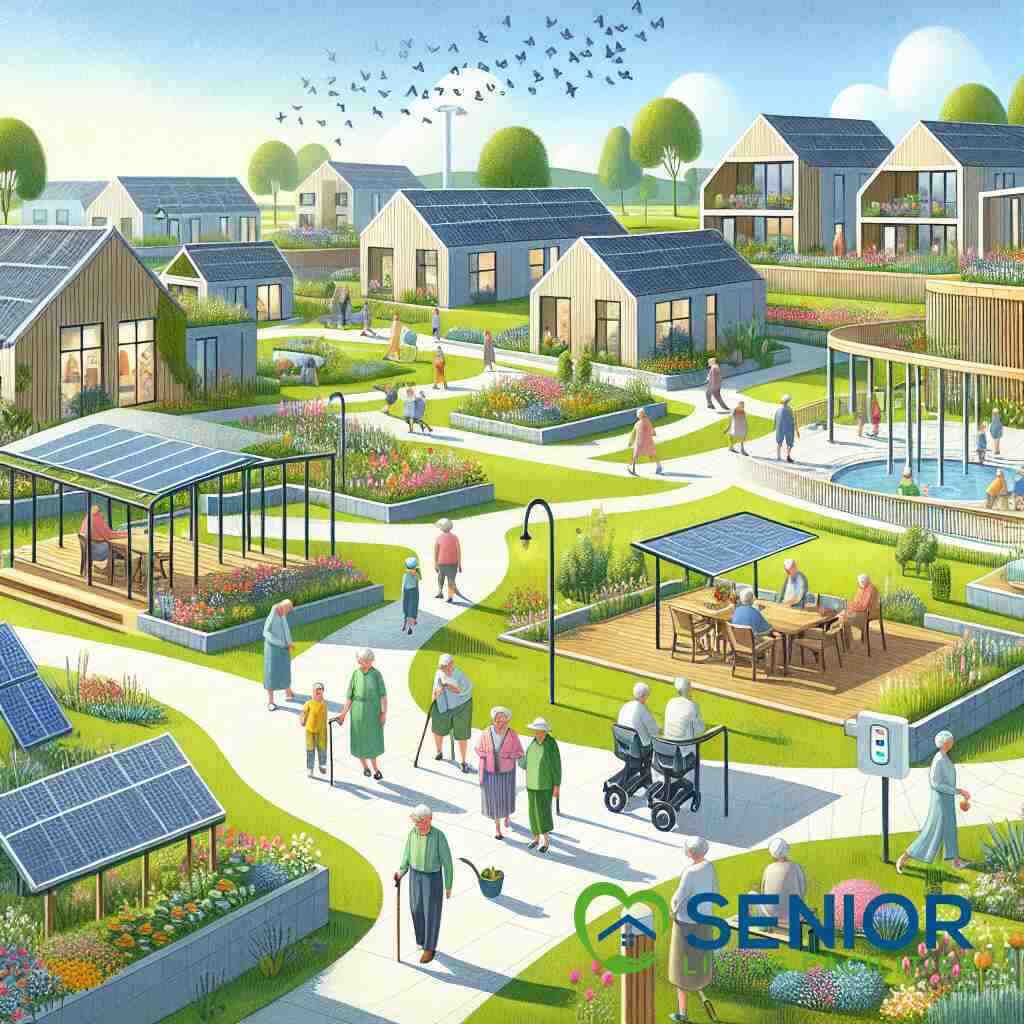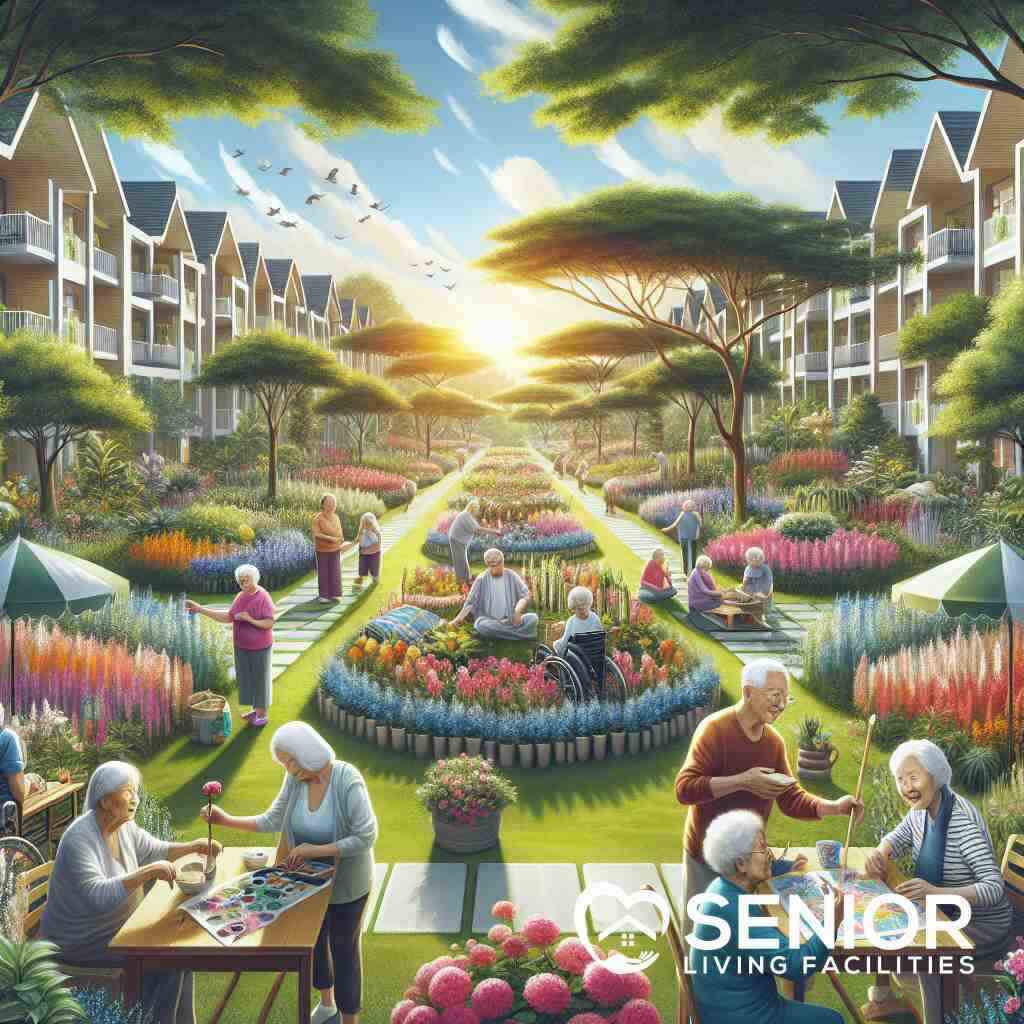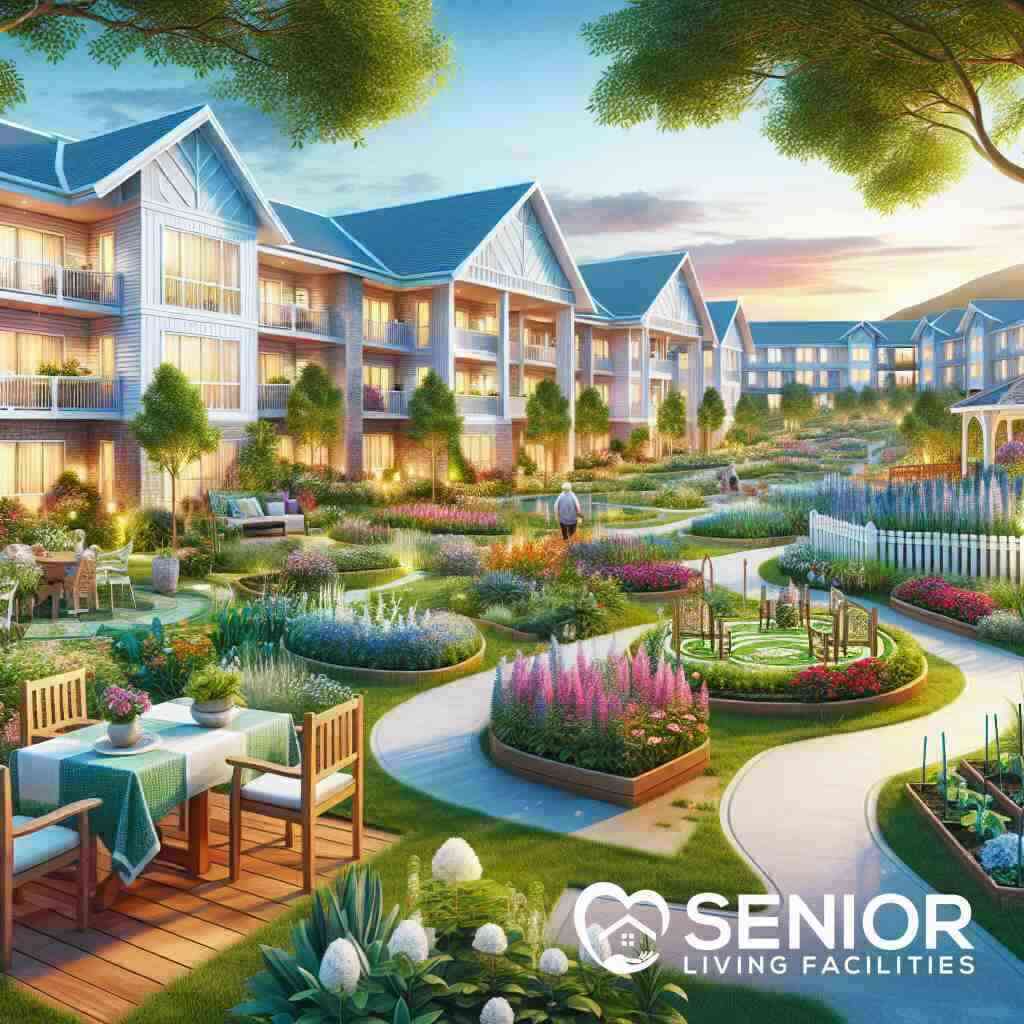
Comparing Assisted Living and Nursing Homes
July 9, 2024
Understanding Senior Living Options
Differences between Assisted Living and Nursing Homes
When exploring differences between assisted living and skilled nursing facilities, it’s essential to recognize the core distinctions that cater to them; it’s necessary to acknowledge the core distinctions that cater to the varying needs of older people. Assisted living facilities primarily focus on empowering residents to maintain a level of independence, offering support in daily living tasks and medication management. On the contrary, nursing homes, also referred to as skilled nursing facilities, are designed for individuals requiring around-the-clock medical care and assistance with every aspect of daily life. The decision between the two usually hinges on the level of care a senior requires, with nursing homes catering to higher levels of medical needs.
Assisted living provides an environment where seniors can lead an active and engaged lifestyle, with access to assistance as needed. These communities aim to foster independence and offer a spectrum of social activities, dining services, and personal care plans. Conversely, nursing homes provide more comprehensive healthcare services, including rehabilitation services and constant access to nursing staff, catering to individuals with severe health issues or those recovering from illnesses or surgeries.
Overview of Senior Living Facilities
Senior living facilities encompass a broad range of options tailored to meet the diverse preferences and care requirements of older adults. From vibrant communities for seniors 55+ to specialized care facilities, these environments are designed to improve the quality of life for residents through a combination of housing, healthcare, and supportive services. The philosophy behind senior living facilities is to provide a safe, nurturing environment that respects the dignity and independence of each resident while offering the level of care and support needed.
The array of senior living community amenities plays a significant role in enhancing daily life within these communities. Amenities often include fitness centers, social and recreational programs, dining services, and transportation, all geared towards enriching the lives of residents through convenience, social interaction, and wellness opportunities.
Introduction to Long-term Care Options
Long-term care options are crucial considerations for families planning for the future well-being of their elderly loved ones. These options range from in-home care services to various senior housing alternatives such as independent living, assisted living, and nursing homes. Understanding the spectrum of long-term care is vital in making informed decisions that align with the individual’s healthcare needs, lifestyle preferences, and financial circumstances.
Each senior living option is distinct and designed to cater to different levels of care requirements and lifestyle choices. Independent living is ideal for active seniors who seek a hassle-free lifestyle without the burdens of home maintenance-assisted living steps in to offer a balanced blend of independent living with tailored support services for daily activities. For those with significant healthcare needs, whether temporary or chronic, nursing homes or skilled nursing facilities provide intensive medical care and supervisory attention.
In navigating the journey towards selecting the most suitable senior care solution, families must assess their needs, research available options, and consider the long-term impacts of their choices on the well-being and quality of life of their elderly loved ones.
The Assisted Living Experience
What Defines an Assisted Living Facility
Assisted living facilities are designed to provide a residential setting that offers personalized support services and care to individuals who may need assistance with activities of daily living (ADLs) but do not require the intensive medical and nursing care provided in nursing homes. At its core, an assisted living facility is a community aimed at seniors who value their independence but need some support with day-to-day tasks such as bathing, dressing, and medication management. These facilities strive to create a balance between assistance and personal autonomy, making safety and comfort a top priority without compromising the resident’s independence or dignity. With various senior housing options in Arizona, for instance, tailored living spaces are offered to meet diverse preferences and needs, ensuring a homelike environment that fosters well-being and social connection.
Daily Living Assistance and Personalized Care Plans
Personalized care plans are a hallmark of the assisted living experience, addressing the bespoke needs of each resident. By evaluating the individual’s healthcare requirements, preferences, and life history, assisted living facilities develop care programs that provide the necessary support while promoting independence. This personalized approach ensures that every resident receives the right amount of care tailored to their unique situation. Services like daily assistance for elders, meal preparation, laundry, and transportation are structured to maintain the dignity and autonomy of residents. These care plans are regularly reviewed and adjusted as the needs of the resident evolve, ensuring a dynamic response to their changing health status.
Activities and Amenities in Assisted Living Communities
Assisted living communities go beyond meeting basic needs by offering an array of activities and amenities designed to enrich the lives of residents. These services typically include wellness programs, educational classes, social events, and cultural outings that encourage active and engaged living. The aim is to foster a vibrant community atmosphere where seniors can enjoy a fulfilling lifestyle. Amenities might encompass everything from on-site fitness centers and libraries to beauty salons and communal gardens. Such environments not only cater to the physical and intellectual needs of the residents but also address their emotional and social well-being. Through these community-driven initiatives, assisted living facilities ensure residents have plentiful opportunities to connect with peers, pursue new hobbies, and maintain an active lifestyle.
Assessing the Level of Care in Assisted Living
Determining the appropriate level of care for an individual is a critical step in the transition to assisted living. This process involves comprehensive assessments by healthcare professionals to understand the resident’s medical history, current health conditions, and daily living needs. Key factors such as mobility, cognitive function, and medication management are taken into account to create a custom care strategy. Based on these assessments, facilities can match residents with the right services and support that align with their health status and lifestyle preferences. Regular evaluations help in adjusting the level of care as residents’ needs change over time, ensuring they continue to receive optimal support throughout their stay in an assisted living community.
Nursing Homes for Advanced Case Needs
The Role of Nursing Homes in Elderly Care
Nursing homes, also recognized as residential care homes or nursing facilities, fulfill a crucial role in the continuum of care for the elderly, particularly for those with substantial health requirements that exceed the scope of assisted living services. These establishments are equipped to provide a high degree of medical care, including 24-hour supervision by licensed health professionals, physical therapy, and access to specialized care services. Unlike assisted living facilities that emphasize independence with assistance, nursing homes cater to residents who need constant medical attention and help with most, if not all, activities of daily living (ADLs). This high level of care ensures that individuals with significant health challenges receive the attention and treatment they require in a supportive environment.
Medical Care and Health Services in Nursing Homes
The medical care and health services offered in nursing homes are comprehensive and designed to meet the complex needs of residents. Facilities typically have a variety of healthcare personnel on staff, including registered nurses, certified nursing assistants, and, in many cases, on-site physicians or medical directors. These team members work together to manage chronic conditions, administer medications, provide wound care, and implement care plans that address both physical and mental health needs. Nursing homes often can provide intravenous therapy, dialysis, and other advanced medical treatments as well, making them a viable option for seniors with significant health issues that cannot be appropriately managed in a less intensive care setting.
Skilled Nursing Facilities and Staff Competencies
Skilled nursing facilities, a subset of nursing homes, possess a specialized focus on rehabilitation and recovery services in addition to long-term care. Staff competencies in these settings are critical to the successful recovery and maintenance of residents’ well-being. Professionals in skilled nursing facilities undergo rigorous training and continuing education to ensure they are proficient in the latest care techniques and therapies. This education enables staff to address a wide range of medical conditions and recovery scenarios, from post-operative care to rehabilitation after a stroke. The competencies of these skilled professionals are what set these facilities apart, providing a level of care that supports both the immediate and long-term health goals of their residents.
Quality of Life Considerations in Nursing Homes
While the primary function of nursing homes is to provide medical and personal care, the quality of life for residents is equally important. Facilities strive to create a positive and enriching environment where residents can enjoy a sense of community and well-being. Activities and programs are often tailored to the interests and abilities of residents, encompassing social events, recreational activities, religious services, and more. Additionally, many nursing homes make concerted efforts to accommodate the personal preferences and routines of residents, fostering a homelike atmosphere. The quality of life in these settings is continuously evaluated. It is an essential part of overall care planning, ensuring that every resident’s emotional, social, and physical needs are met in a dignified manner.
By focusing on both the high-level medical needs and the holistic well-being of residents, nursing homes play an indispensable role in the landscape of senior care solutions, providing a critical safety net for those with the most profound healthcare needs.
Comparing Costs and Services
Nursing Home Costs vs Assisted Living Costs
Understanding the financial implications of choosing between an assisted living facility and a nursing home is crucial for families and seniors. Generally, nursing homes tend to be more expensive than assisted living facilities due to the higher level of medical care and supervision they provide. Assisted living costs can vary widely depending on the location, size of the living space, and the necessary level of care. These facilities often charge a monthly fee that covers room and board, basic utilities, meals, and some personal care services. Nursing homes, on the other hand, may bill at a daily rate due to the intensive, round-the-clock healthcare services they offer, including medical monitoring, therapy, and rehabilitation services. When comparing, it’s important to consider what services are included in the fee structure to assess the cost-effectiveness of each option accurately.
Evaluating the Financial Aspects of Senior Care Solutions
Evaluating senior care solutions finance involves looking beyond the monthly fees and understanding what each type of facility provides for its residents. Assisted living residences usually offer tiered pricing models, allowing residents to select packages that best match their needs, potentially keeping costs lower if fewer services are required. In contrast, nursing homes often have a set fee that encompasses a range of medical and personal services due to the nature of care needed by their residents. It’s also worth exploring possible hidden fees or additional costs for specialized services, as these can impact the overall affordability of a facility. Families should thoroughly investigate financial assistance programs, such as Medicaid, Medicare, or long-term care insurance, which can significantly affect the financial planning for senior care.
The Impact of Long-term Insurance on Care Options
Long-term care insurance can play a pivotal role in expanding the choices available to seniors requiring assisted living or nursing home care. These insurance policies are designed to cover services not typically paid for by health insurance, Medicaid, or Medicare, including assistance with activities of daily living and extended stays in nursing facilities. Understanding the finer details of a long-term care insurance policy is essential, as benefits, eligibility requirements, and coverage limits can widely vary. Policies may cover the cost of a nursing home, assisted living, or even home health care, giving policyholders more flexibility in choosing their preferred type of care. Evaluating how these policies impact the long-term care planning process is a critical step for families and seniors, ensuring that they can make informed decisions that align with both their care needs and financial resources.
Choosing the Best Option for Your Loved Ones
Assessing Health and Independence Levels
When deciding between an assisted living facility and a nursing home for your loved ones, the first step is to assess their current health and independence levels accurately. This involves evaluating their abilities to perform activities of routine living guidance, understanding their medical needs, and considering the level of assistance or medical care they may require. It’s important to involve healthcare professionals in this assessment to get a clear, objective understanding of their needs. Such evaluations not only inform about the immediate requirements but also help in foreseeing potential future care needs, ensuring that the selected option can accommodate evolving health scenarios.
Senior Housing Options and Community Preferences
Exploring senior housing options involves understanding not only the care needs but also the preferences and lifestyles of the elderly. Some individuals may prefer a vibrant community environment offered by assisted living, while others may require the more personalized, medical-focused environment of a nursing home. Taking into account personal preferences, such as the desire for social activities, privacy, and the proximity to family and loved areas, is crucial. Communities for seniors 55+ often offer a range of amenities and social opportunities that can significantly enhance the quality of life for active seniors, pointing towards the importance of aligning choices with personal preferences and lifestyle desires.
Navigating Senior Living Facilities Near You
Finding the right senior living facility requires thorough research and consideration. Utilizing resources that allow you to explore senior living near options can simplify the process by providing you access to a database of licensed and reputable communities. It’s recommended to visit several facilities, speak with staff and residents, and review each facility’s safety and health compliance records. Also, understanding the philosophy of care, the ratio of staff to residents, and the facility’s ability to handle medical emergencies or health deteriorations plays a key role. Personal visits and interactions will give invaluable insights into the daily operations, community feel, and overall environment, aiding in making an informed decision.
Personalized Care Plans in Assisted Homes vs. Nursing Homes
Both assisted living and nursing homes should offer personalized care plans, but the focus and extent of these plans can differ significantly. In assisted living facilities, care plans are typically designed to provide support with daily living activities while encouraging as much independence as possible. These plans are flexible and adjust to the changing needs of residents. In contrast, nursing homes offer more comprehensive medical care plans that address the multifaceted health requirements of their residents, including regular medical monitoring, rehabilitation services, and 24-hour nursing care. The choice between assisted living and nursing homes will, therefore, depend not only on the current health status of your loved one but also on anticipated healthcare needs, ensuring they receive the appropriate level of care and support tailored to their requirements.
Safety, Regulations, and Quality Assurance
Safety Measures and Compliance in Senior Living Facilities
Ensuring the safety of residents in senior living facilities is paramount, with rigorous standards and protocols established to protect those who call these communities home. From physical security features, such as surveillance cameras and secure entryways, to health and safety protocols, like regular health screenings and emergency preparedness plans, safe senior living communities prioritize the well-being of their inhabitants. Compliance with local, state, and federal regulations ensures that facilities maintain high standards of safety and care, providing peace of mind for residents and their families. These measures are continually reviewed and updated to adapt to evolving health and safety standards, highlighting the commitment to providing a secure and nurturing environment.
Understanding Regulations Governing Assisted Living and Nursing Homes
The regulatory environment governing assisted living and nursing homes is complex, with oversight spanning multiple agencies to ensure the highest standards of care and safety are met. Facilities must adhere to stringent guidelines related to staffing ratios, resident care plans, medication management, and facility operations. Each state has its own set of regulations and licensing requirements that facilities must comply with, in addition to adhering to federal standards where applicable. Understanding these regulations is crucial for families when selecting a senior living option, as compliance is a key indicator of a facility’s commitment to quality care and operational excellence. Navigating the landscape of laws and guidelines can be challenging. Still, it is essential to ensure that loved ones receive the care and support they need in a safe and regulated environment.
Ensuring Quality of Care and Life in Senior Living Options
The quality of care and life in senior living facilities is a multidimensional concern, encompassing everything from the physical health care provided to the emotional well-being and social engagement of residents. Ensuring quality of existence in assisted living requires a holistic approach that integrates medical care with opportunities for social connection, personal growth, and recreational activities. Facilities that excel in providing quality care are those that focus on personalizing services to meet the unique needs of each resident, fostering a sense of community and belonging. Regular assessments and feedback mechanisms are in place to monitor satisfaction and address any issues promptly, demonstrating the continuing commitment to enhancing the lives of seniors. The goal is not only to meet the basic needs of residents but to enrich their lives, making their golden years as fulfilling and joyful as possible.
Planning for the Future
Long-term Care Planning and Senior Living Facilities
Planning for the future is an essential consideration for seniors and their families, as navigating the landscape of long-term care can be both complex and daunting. Senior Living Facilities play a pivotal role in this landscape by offering a plethora of long-term residential healthcare options that cater to the diverse needs and preferences of older adults. Whether the need is for an assisted living facility that encourages independence with support or a nursing home that provides more comprehensive medical care, understanding the array of available solutions is the first step in making an informed decision.
Long-term care planning involves evaluating current health status, anticipated healthcare needs, financial resources, and personal preferences. It’s about envisioning a future where seniors not only have access to the care they need but also to communities where they can thrive. Senior Living Facilities underscore the importance of personalized care plans, ensuring that every senior has a tailored solution that optimally balances health requirements with desires for a fulfilling life.
The Role of Family and Healthcare Providers in Decision Making
The decision-making process for selecting the right senior living option often involves a collaborative effort among family members and healthcare providers. This cross-disciplinary approach ensures a holistic understanding of the senior’s condition and caregiving needs. Families play a crucial role by providing insights into the senior’s personal history, preferences, and lifestyle desires. At the same time, healthcare providers offer an expert assessment of the senior’s health and functional status.
Collaboration fosters a comprehensive evaluation that forms the foundation for informed decisions. It’s also critical to identify a living situation that not only meets the healthcare needs but also aligns with the senior’s wishes for independence, social engagement, and quality of life. Navigating these decisions with empathy, understanding, and knowledge can make the transition to senior living a positive step toward ensuring the well-being and happiness of loved ones.
Resources and Support for Families Navigating Senior Care Choices
Navigating the myriad of senior care choices can be overwhelming for families. This is where resources like Senior Living Facilities become invaluable. Offering detailed information on everything from independent and enriched living options to care options for the elderly, the platform equips families with the knowledge needed to make confident decisions. Additionally, it provides a direct connection to a wide network of senior living facilities across all 50 states, allowing families to find the perfect match for their loved ones’ needs nearby.
Moreover, Senior Living Facilities offers guidance and support throughout the search process. From providing checklists and tips for evaluating facilities to offering personalized consultation services, the platform ensures that families have access to expert advice every step of the way. It’s this level of support and the comprehensive resources available that make navigating senior care choices less daunting, ultimately leading to better outcomes for seniors and their families.
As families plan for the future, it’s clear that a thorough understanding of the available living arrangements, the collaborative input of healthcare providers and loved ones, and the utilization of comprehensive resources are all integral to selecting the best senior living solution. Senior Living Facilities stands as a beacon of assistance and information, guiding families towards making well-informed decisions that enhance the lives of their elderly loved ones.
Frequently Asked Questions
Question: What are the main differences between assisted living and nursing homes, as discussed in your ‘Comparing Assisted Living and Nursing Homes’ blog post?
Answer: The main differences between assisted living facilities and nursing homes revolve around the level of care provided and the lifestyle of the residents. Assisted living is ideal for seniors who need some help with daily activities but wish to maintain a degree of independence. For further details, visit our page on Why Choose Assisted Living in North Carolina 2024. These facilities offer personalized care plans, daily living assistance, and a range of social activities and amenities to enhance quality of life. Nursing homes, or skilled nursing facilities, on the other hand, cater to individuals requiring 24/7 medical care and assistance with most or all daily living activities due to more severe health issues. Our blog post on ‘Comparing Assisted Living and Nursing Homes’ delves deep into these distinctions to help families make informed decisions about senior care solutions.
Question: How do senior living facilities help families evaluate the financial aspects of choosing between an assisted living facility and a nursing home?
Answer: Senior Living Facilities understand the importance of financial planning in the decision-making process for senior care. We offer comprehensive resources and guides that break down the costs associated with both assisted living and nursing homes. By comparing nursing home costs vs assisted living costs, families can better understand what services are included and identify which option is more cost-effective for their specific situation. Additionally, our platform provides information on financial assistance programs like Medicaid, Medicare, and long-term care insurance, which can significantly affect the affordability of these options. Further information can be found in our review of Affordable Housing Options for Seniors in Texas. Our goal is to equip families with the knowledge to make fiscally responsible choices that meet their loved one’s care needs and preferences.
Question: Can Senior Living Facilities assist in finding skilled nursing facilities for seniors with advanced medical needs?
Answer: Absolutely. Senior Living Facilities offers a robust database and an assisted living locator tool that includes skilled nursing facilities designed for seniors with advanced medical needs. Our platform provides detailed profiles of nursing homes for the elderly across all 50 states, ensuring that families can find the right facility that offers the required level of medical care and health services. By utilizing our resources, families can compare different facilities, understand the specific services provided, and connect directly with top-rated nursing homes to ensure their loved ones receive the best possible care and support. Learn more by reading The Best Senior Living Facilities in Virginia Revealed.
Question: In what ways do assisted living facilities focus on improving the quality of life for residents, according to Senior Living Facilities?
Answer: Assisted living facilities focus on improving the quality of life for their residents by offering a balance of personal care support and opportunities for social engagement and active living. According to Senior Living Facilities, these communities provide a variety of amenities and activities, such as fitness programs, social events, educational classes, and cultural outings, designed to fulfill the physical, intellectual, and social needs of seniors. Personalized care plans ensure that each resident receives individual attention tailored to their needs, promoting independence and well-being. Moreover, the homelike environment and community atmosphere encourage residents to forge meaningful connections with their peers, enriching their daily lives and overall experience in the facility.
Question: How do Senior Living Facilities ensure the safety and compliance of the senior living options listed on their platform?
Answer: Senior Living Facilities prioritize the safety and well-being of seniors by featuring only licensed and reputable communities within its extensive database. Each senior living facility, from assisted living locations to nursing homes, is thoroughly vetted to ensure compliance with local, state, and federal safety regulations and quality standards. For an in-depth look, visit What Makes a Great Senior Living Community in NJ. Our platform regularly updates the safety protocols and health compliance records of these facilities, allowing families to make informed decisions with confidence. Additionally, through personal visits and assessment of facilities’ operational excellence, Senior Living Facilities ensures that listed options maintain the highest standards of care, safety, and resident satisfaction.




